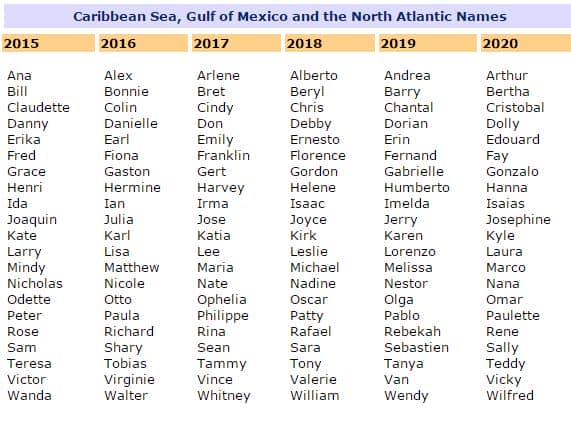Remember the plunder of destruction that Category-5 Hurricane Katrina caused in over a dozen of the U.S. states and Cuba back in 2005. Apart from the $108.0 billion money lost in damages and thousands of lost lives, a joke went around too. You may have heard people saying that the Female named hurricanes cause significantly more damage than the male ones.
Imagine the horror those people face who share their names with these disasters. We are pretty sure the name has nothing to do with the catastrophe that these storms cause. But then, how and why are they given such names? Is it vital to give them a name at all?
Since hurricanes happen in many parts of our oceans, it would be insanely difficult to track them if they are not named. Initially, meteorologists named these storms with their latitude and longitude numbers. But, it made it quite difficult for them to communicate information to the common people. Clare Nullis, a spokesperson for World Meteorological Organization (WMO), said that hurricanes are given names for the sake of public safety. Hence, it is easier for media to publicize it and increase the interest in warning and safety measures.
The formal practice of naming the storms began in 1950 by National Hurricane Center, US, but the lists are now maintained by WMO. In the beginning, these names went after the phonetic alphabets like Adam, Baker, and Charlie, but the same names were repeated each hurricane season that caused massive confusion. The organization then began to name the hurricanes after women in 1953. For obvious reasons, the method was revised again in 1979, and we got the system that we use to this date.
WMO has already created a list of names to last six years, and the same names are rotated every year. The names in the list do not include the ones beginning with the alphabet Q, U, X, Y or Z, and the list alternates between male and female names. If more than 21 storms occur in one season, scientists use the Greek alphabets to name them.

A lot of the twisting storms occur in our oceans, but we only get to hear about the ones that destroy the land. In such cases, the names need to retire. A representative from the affected country requests to retire the name at the annual meetings of WMO committee called Regional Association IV Hurricane Committee. If the said storm has caused massive damage, using the same name for another one is quite insensitive. The hurricane Katrina, Sandy, and Ike are the three most disastrous of Atlantic hurricanes, and thus, these names have been replaced on the list.
There have been other storms named Harvey in the past, clearly of much smaller scales. However, it is the first time that a storm has been named Irma as it replaced Irene on the list that retired in 2012. Whether or not these two names will be retired, it is a decision that will be taken at the next meeting of Regional Association IV Hurricane Committee that is due to be held in France in 2018.
Still, names of these hurricanes are ridiculous, aren’t they? What do you think?


